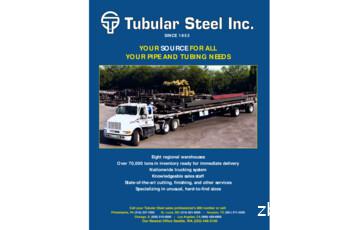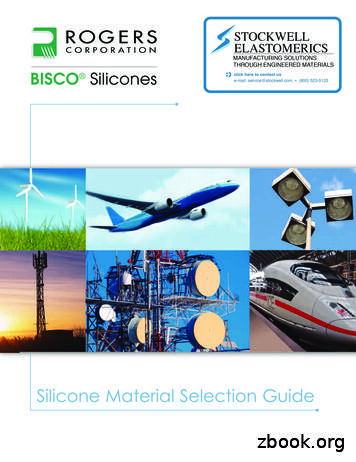ASTM Standards For Pervious
ASTM Standards for Pervious C-1688 – Fresh Unit Weight C-1701 – Hardened Infiltration C-1747 – Raveling Potential C-1754 - Hardened Density and Voids
ASTM C 1688 Closest thing to a ‘slump test’ for pervious – used tocheck the ready mix producer’s consistency Also provides important information to the installerand the testing lab or owner Current range of /- 5 pounds per cubic foot may betoo broad (my opinion) Voids and density will vary based on local materials,application requirements and installer’s method ofplacement.
ASTM C-1701 Used to check infiltration rates of hardened pervious May now be used for acceptance – specify as aminimum (400 inches/hour?) Results for individual test vary – look at averages. Useful for determining loss of infiltration rate overtime – if test is run immediately after placement andbefore service to set a baseline Use to determine when cleaning or othermaintenance is needed
ASTM C-1747 More important than compressive strength forpervious (my opinion ) Samples are molded per the standard and thentumbled (LA Abrasion) 500 cycles (no steel shot) Mass loss is measured – lower loss should meantougher, more durable pervious. Results under 40% mass loss appear to representgood pervious mixes. Not intended for use with cores
ASTM C-1754 For HARDENED density and voids Requires coring – tests are run on cores taken fromfield installation Two drying methods are allowed in the standard –they will produce different results. Can’t compareresults between the two drying methods.
ACI 522.1-13 Reference Specification for Pervious Concrete Specifiers may add additional requirements – suggestinclusion of the following: Baseline infiltration testing using C-1701 Determination of hardened density to use C-1754 Consider use of C-1747 for mix design submittals ENFORCE requirements for certified installers ANDtesting personnel
Modern Pervious Placement REQUIRE certified installers, per ACI 522.1-13 Most pervious today placed with single roller screedsand should produce good, consistent results. Better techniques are being developed to increasecompaction without sealing the pavement BUT they require skilled installers and good mix designs!
Contractor Certification Pervious Concrete Installer Certification developed by theNational Ready Mixed Concrete Association Three levels of certification: Technician – pass written exam. Required for field testingtechnicians. NOT sufficient for Installer personnel Installer – pass written and performance exam, plus meetminimum experience qualifications. Three Installers requiredon every pervious placement to meet ACI 522.1-13 Craftsman – All of the above, plus 1500 hours of directpervious experience. (Still very rare – about 45 in US)
Modern Pervious Mixes Easier to place and harder to mess up CAUTION: Still a lot of “old” mix designs floating around Cementitious contents are trending lower and w/cratios are trending higher – both good things! NEVER specify cement content or require minimumcement contents! ALWAYS require ready mix producer to submit C 1688information (density and voids) and consider C 1747test results
Pervious Wet Voids
Modern Pervious Mix
It’s NOT 1-size Fits All
Results From the FieldMurfreesboro Ready Mix Plant Installation Preliminary Results Infiltration Results
Murfreesboro (TN) 2016 Field Study49 Test Loads(7 Tests)UW HardHard VoidC1688NONE!C1747C1701C1754C1754Unit WeightPSIMass 1594.25std. dev.4.24479.275.75578.01%std. dev.3.4%23.3%8.0%36.5%113.795354127.49
Adding 20# of OPCFormulacomp. strength28d abrasion mass kept272486C10 ( 20 OPC)2712.5761573C11 ( 20 OPC)2302722258C12 ( 20 OPC)2256.5701697C13 ( 20 OPC)2680.567N/TC17 ( 20 OPC)2966.574N/T721843A2Averages2584infiltration
Adding 125# SandFormulacomp. strength28d abrasion mass kept272486C14 ( 125 sand)2551.5802116C15 ( 125 sand)2902722840C16 ( 125 sand)2376.581N/TC18 ( 125 sand)226167N/T752478A2Averages2523infiltration
Does it Need Maintenance?
Absolutely!
Can it be Cleaned?
Absolutely!
NRMCA Maintenance &Operations Guide
First Steps Designs should be checked to see if they are maintenance-friendly Assure/Verify a quality installation, including soilcharacteristics, gravel layer, and pervious Require certified installers and REQUIRE initial infiltrationtesting (C1701) Provide owner with Maintenance/Operations Guide
Next (Three) StepsStep One: Routine Maintenance Periodic Visual Inspection Leaf blower or similar as needed Sweeping (for entire lot) as needed Spot maintenance – more intensive as needed toprevent more severe clogging
Next (Three) StepsStep Two: Periodic Maintenance Often PRIOR to onset of winter, always when routinemaintenance isn’t enough Should start with sweeping or dry vacuum process –get all loose material off. Measure (weigh) if possible. May require pressure wash and vacuum at same time
Next (Three) StepsStep Three: Deep Cleaning When infiltration rate drops by more than 25%, orunder 100 inches per hour. Will require simultaneous application of pressurizedwater and significant vacuum – specializedequipment.
Results From the Field0 Franklin Eastern Flank Infiltration Testing0 Pervious Field Inspection Report
Franklin (TN) Parking LotEstimated Pounds Removed:843Primary Filter Bag169Dry Vacuum Removal:280Total Pounds Removed:Over ¼# of sediment per SF1292
Franklin (TN) Parking LotAverage Infiltration Before:18Inches/HRAverage Infiltration After:196Inches/HR
Winter Time Notes 1st winter is more critical – same as for conventionalconcrete De-icing chemicals NOT recommended. Researchongoing for admixtures to impart better chemicalresistance Calcium treated sand (after 1 st winter) or plainCOARSE sand may be used – pavement must bevacuumed at end of winter Plow with caution
Questions?
Contact InformationTennessee Concrete Association705 Fort Negley CourtNashville, TN 37203615-360-7393www.tnconcrete.orgAlan Sparkman, Executive Directorasparkman@tnconcrete.org
ASTM C-1747 More important than compressive strength for pervious (my opinion ) Samples are molded per the standard and then tumbled (LA Abrasion) 500 cycles (no steel shot) Mass loss is measured – lower loss should mean tougher, more durable pervious. Results under 40% mass loss appear to represent good pervious mixes.
ASTM C42 ASTM C293 ASTM C457 7066 SW 44th ST Miami, FL 33155 Contact: Andres Diaz Abdias H. Saenz, P.E. ASTM C215 Ph 305-668-5792 Fax 786-513-3754 ASTM C900 ASTM C4435 ASTM C597 ASTM C642 Jaime Reyes, P.E. ASTM C174 ASTM C215 ASTM D698 ASTM D2167 ASTM C1585 ASTM D4263 ASTM D4564 ASTM D4580 ASTM C1740 ASTM D4263 ASTM
astm a 966, 135, 136 astm d 1298, 139 astm d 1500, 139 astm d 2161, 141 astm e 1025, 63 astm e 1032, 59 astm e 11, 136, 137 astm e 1135, 102, 107 astm e 1316, 80 astm e 1416, 59 astm e 1417, 106–108, 114 astm e 1444, 131–138, 141, 142 astm e 1647, 69 astm e 165, 109, 115 astm e 1742, 59 astm e 709, 132 astm e
*astm a182 *astm a564 *astm a213 astm a778 *astm a249 asms-5613 *astm a269 asms-5639 *astm a276 asms-5640 *astm a312 asms-5647 . astm a512 cdbw & cdew astm a513 dom astm a519 cdsm sae j524/j525 hydraulic ams 5050 fluid line specification astm a135 astm a178 grd a astm a214 astm a500 grd b astm a513 type 1,2 awwa c200
JIS G3459, JIS G3463. GOST 9940, GOST 9941 Nickel Alloy Pipe Specification: ASTM B111, ASTM B161, ASTM B163, ASTM B165, ASTM B167, ASTM B338, ASTM B407, ASTM B423, ASTM B444, ASTM B619, ASTM B622, ASTM B626, ASTM B668, ASTM B677, ASTM B829 or Standards stipulated in the technical agreement. Add:No.3, Jiangnan Road, Jiangnan Industrial Park, Songyang, Zhejiang Province, China Cell: 86-159 .
ASTM D 1056 ASTM D 1056 ASTM D 412 ASTM D 412 ASTM E 162 ASTM E 662 SMP-800- C ASTM E 595 ASTM E 595 ASTM E 595 Rogers Internal ASTM D 746 ASTM D 150 ASTM D 149 ASTM D 495 ASTM D 257 ASTM C 518 Flame Resistance Flame Spread Index (Is) Smoke Density (Ds) Toxic Gas Emissions Rating Total Mass Loss Collected Volatile Condensible Materials (CVCM) Water
ASTM A335 Gr P9 ASTM A234 Gr WP9 ASTM A182 Gr F9 ASTM A217 Gr C12 Carbon Steel ASTM A333 Gr 6 ASTM A420 Gr WPL6 ASTM A350 Gr LF2 ASTM A352 Gr LCB ASTM A320 Gr L7 Alloy ASTM A194 Gr 7 Low-Temp ASTM A333 Gr 3 ASTM A420 Gr WPL3
ASTM D638 TAS201 ASTM F476 TL-144 International Accreditation ASTM C1167 ASTM E773 ASTM E783 ASTM E987 ASTM E1105 ASTM E1886 Certificate of Accreditation Services Inc. TAS203 ASTM B117 ASTM C39 UL 580 UL 1897 ASTM G154 ASTM D635 ASTM G85 ASTM D790 TAS201 TAS202
Flexural (ASTM D790), Tensile (ASTM D638) Adhesion (ASTM D4541 and ASTM D3359) Sag resistance Dry film thickness Adhesion Hydrostatic leakage test (ASTM F1216) CIPP ASTM D5813 ASTM F1216 ASTM F1743 ASTM F2019 Tensile (ASTM D638 and ASTM D2290) Flexural (ASTM D790) Tensile Creep (ASTM D2990) Burst (ASTM D1599)























